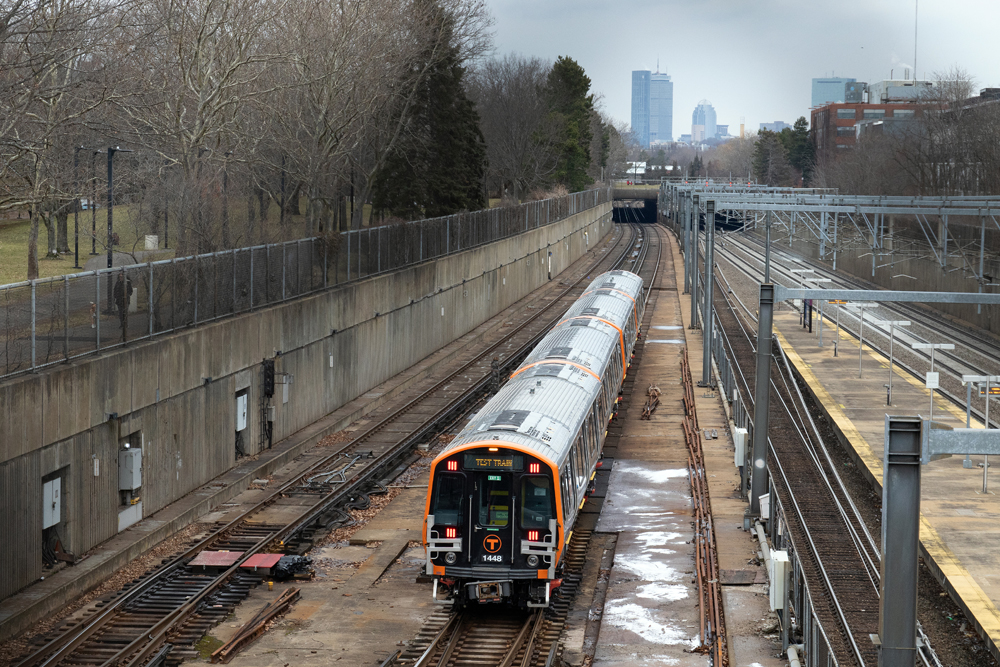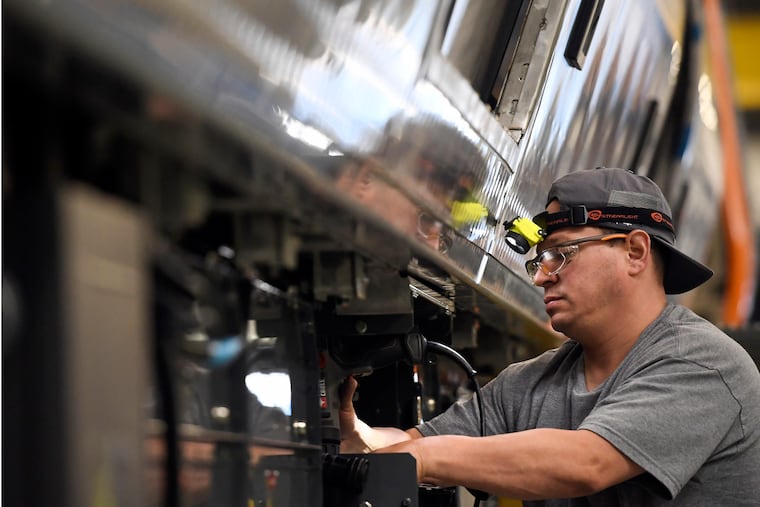MBTA general manager Phil Eng has a lot riding on his decision to give CRRC until 2027 to deliver several hundred long-overdue Orange and Red Line cars — and to pay the Chinese state-owned company an additional $148 million to finally follow through on its promises. The T is also forgiving $90 million in penalties for delays and deficiencies and could end up forgiving another $37 million in accrued penalties.
Why? According to Eng, the alternative — hiring another company to finish building the trains — would cost more and take more time. Given that, he’s trying to make the best out of a bad situation. Getting those desperately needed new rail cars as soon as possible is the T’s priority. But for those T riders who are still stuck riding old cars — and for anyone else who cares about how taxpayer money is spent in Massachusetts — it sure looks like CRRC is being rewarded for poor performance.
The only way this saga can have a silver lining is if it leads to a change in the way the T handles large procurements in the future.
To recap an old, sad story: In 2014, CRRC won a $566 million contract to supply the MBTA with 284 new Orange and Red Line cars. It was the low bidder at the time. The contract was increased twice (in 2017 and 2020) to a total value of about $870 million when additional cars were ordered.
The cars are being assembled at a Springfield factory that CRRC built at a cost to the company of $95 million. The state took no federal money, so it could require CRRC to build its manufacturing facility in Massachusetts. The T was supposed to have a total of 404 new cars by last September. To date, it has 114 of 152 new Orange Line cars and 18 of 252 Red Line cars. Not all of the delivered cars are in operation; some are still in their pre-service testing/inspection phase, according to a T spokesperson.
To be clear, Eng inherited the CRRC mess when he took over the GM’s job a year ago. At that point, however, it became his to solve, and now he owns it. Given CRRC’s track record, why is Eng confident the company can deliver what it failed to deliver in the past? “We have brought a higher level of attention to the interactions (with CRRC), to decision making and to be able to give direction where needed,” he told the editorial board. CRRC also brought on “more senior people”, he said, and “we took a really deep dive” into production line problems. The production line issue, he said, “is something that I wish they had taken care of before, because we could have straightened this out much sooner. And we would probably be further ahead. But it wasn’t.”
Eng is sympathetic to some challenges faced by CRRC. For example, tariffs imposed by the Trump administration on rail equipment imported from China added to the company’s costs and the pandemic brought unexpected supply chain issues and related workplace issues.
But as The Globe has reported, the Springfield factory where the cars are assembled was also beset by “chronic quality issues” outlined in a letter sent to the company in 2022 by Mark DeVitto, the T’s deputy director of vehicle engineering. Several
former workers also told the Globe about a disorganized and toxic workplace environment, which led to mistakes and delays long before the pandemic began.
Now, going forward, what lessons should be learned from the CRRC debacle?
Choosing the low bidder fit CRRC’s business strategy, at least at the outset, which was to demonstrate its capabilities with the hope of growing its business in the United States. So the company undoubtedly underbid, figuring it would make up for any losses with additional business. It did win other contracts, but then tariffs and other government-imposed restrictions undercut its business model. The company faced price escalations, as did its subcontractors. Whether choosing the low bidder worked to the state’s benefit is an open question, given the extra price it’s now paying, while still awaiting delivery of much of what it ordered. Eng insists the price per car, which will “only be paid as we get delivery, is still a very good price.”
To protect itself, Eng said that one thing the state should do is build price adjustments into future procurement contracts. Keeping up on car maintenance is also important, he said, to keep T equipment in the best possible state of repair. It’s also important to think about replacing cars long before what is called “the useful end of life” — which is about 30 years for a rail car, he said. “What I’d like to do is find a way to not only commit to a car procurement contract earlier, but have a longer-term relationship with a vendor, whereby the non-recurring costs such as the initial design can be utilized over a longer period of time.” For example, Blue Line cars are about 18 years old and Eng said he is already thinking about a replacement plan.
A major goal of the CRRC contract was to provide jobs for Massachusetts workers, and from the T’s perspective, that remains a key benefit. “We want that plant in Springfield, we want those jobs,” said Eng. Indeed, US Rep. Richard Neal, a big cheerleader for the plant which is located in his district,
put out a press release lauding Eng for “putting forth a plan that will deliver on all fronts for all of Massachusetts: completing manufacturing of the remaining Red and Orange Line cars, while protecting the 400 union jobs at CRRC’s manufacturing plant in Springfield.” Protecting union jobs is fine, if those union workers are producing quality work, on deadline. As CRRC’s production history shows, that wasn’t always the case. But Eng is sympathetic to that, too, saying, “These are high-pressure jobs... How do we put them (workers) in a position where they understand that their work is important and that we appreciate the work they are doing?
That, too, is now on Eng — along with the commitment to deliver, once and for all, what CRRC is being paid by the taxpayers of Massachusetts to deliver.


